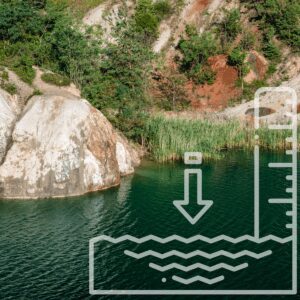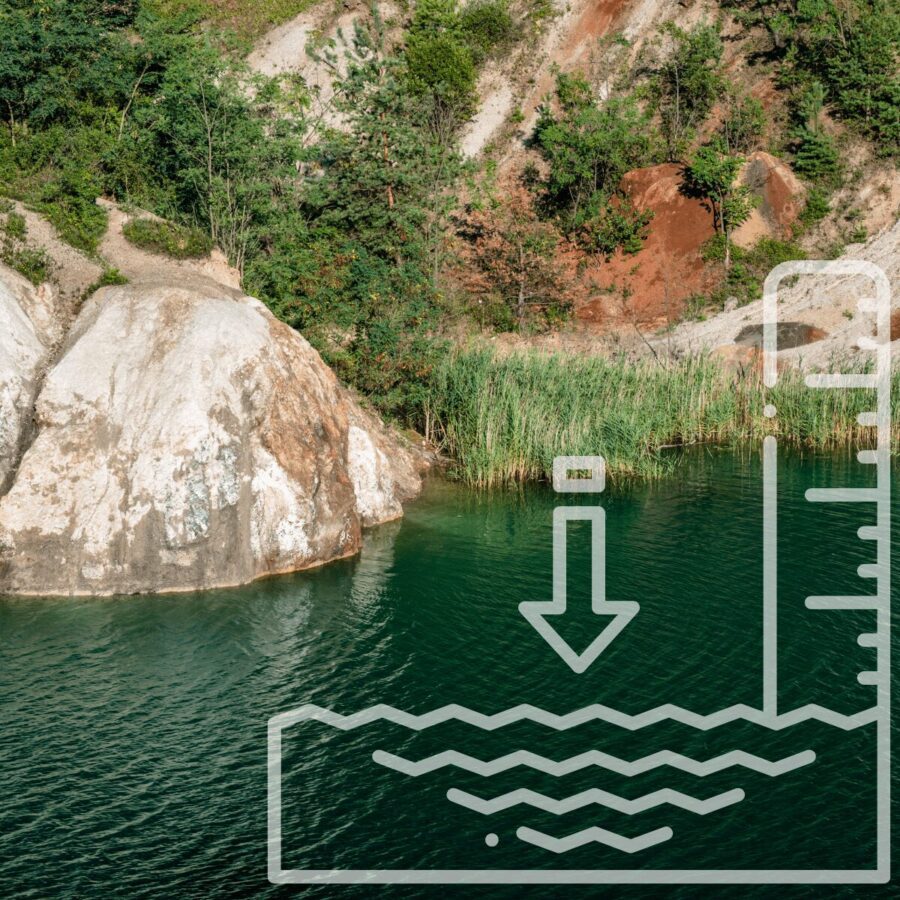

For the long-term planning of water management issues in the Central German lignite mining area [LMBV mbH (2010): Zwei Jahrzehnte Braunkohlesanierung - Eine Zwischenbilanz; Leipzig], large-scale groundwater models based on the PCGEOFM software (https://www.ibgw-leipzig.de/index.php/haupt-pcgeofim) are operated and updated. The flooded mining lakes and the receiving water systems are taken into account as time-varying boundary conditions in order to map the interactions with the groundwater balance. Long-term forecasts have so far been made on the basis of long-term climatic averages over the past 40 years. This approach is based on the assumption that future climatic conditions will develop in the same way as previous ones.
Current climate projections for Saxony (ReKIS), which show increasingly drier and warmer conditions in the future [http://rekis.hydro.tu-dresden.de/], have not yet been taken into account in the model forecasts. However, in the course of current water law procedures, there is a concrete need for realistic estimates of future lake water levels, surpluses and discharges.
In order to meet these requirements in a goal-oriented manner, a methodologically simplified approach was chosen as an example to take future climatic development into account.
For this purpose, the model forecasts were carried out on the basis of the 10-year series 2011 to 2020 and the 3-year series 2018 to 2020. Due to their brevity, these series are only suitable to a limited extent as a basis for long-term forecasts. However, the scenarios are highly relevant insofar as they depict the trend towards increasingly drier and warmer conditions in a methodologically simplified way. According to the statement of the responsible licensing authority, with regard to the average temperature increase, the 2011 to 2020 series roughly corresponds to the political climate target (RCP2.6, +1.5 K compared to the 1961-1990 climate series), while the 2018 to 2020 series (+2.2 K) is still significantly colder than projected in the "continue-as-before" scenario (RCP8.2, +5 K in 2100) [LfULG Saxony, German Weather Service (2021)].
The simplified methodological approach of basing the model forecasts on various time series measured in the past represents an initial pragmatic and goal-oriented approach.
IBGW Ingenieurbüro für Grundwasser
Links to sources:
https://www.bayceer.uni-bayreuth.de/FH-DGGV-2022/de/prog/bayconf/beitrag_detail.php?id_obj=20857

